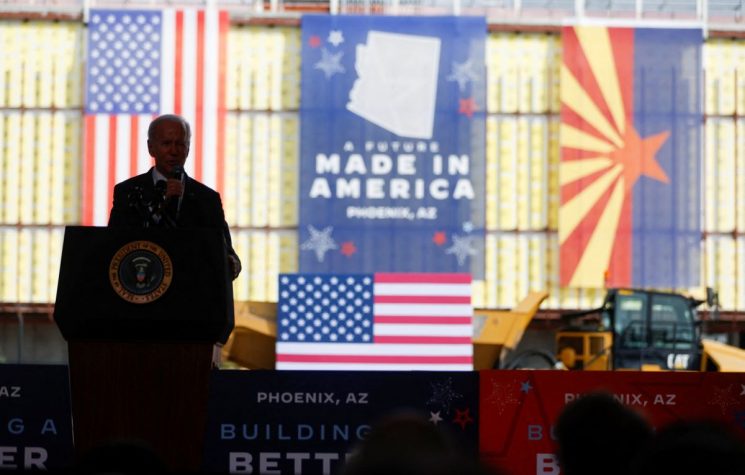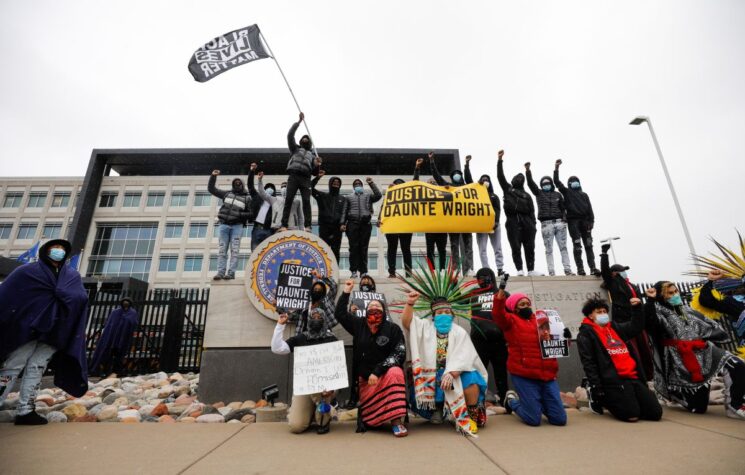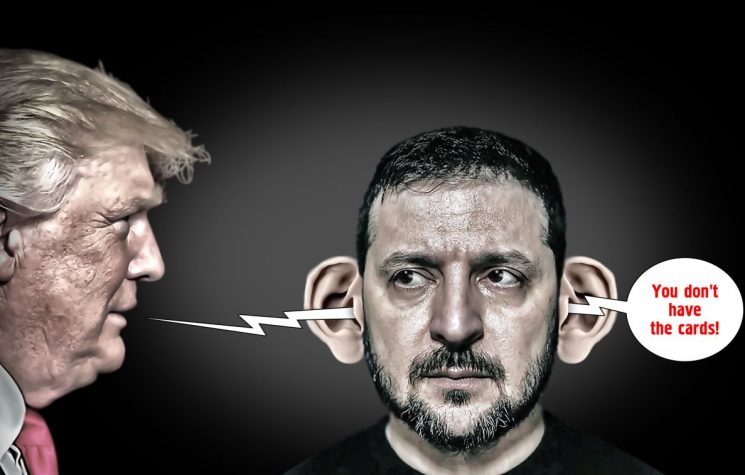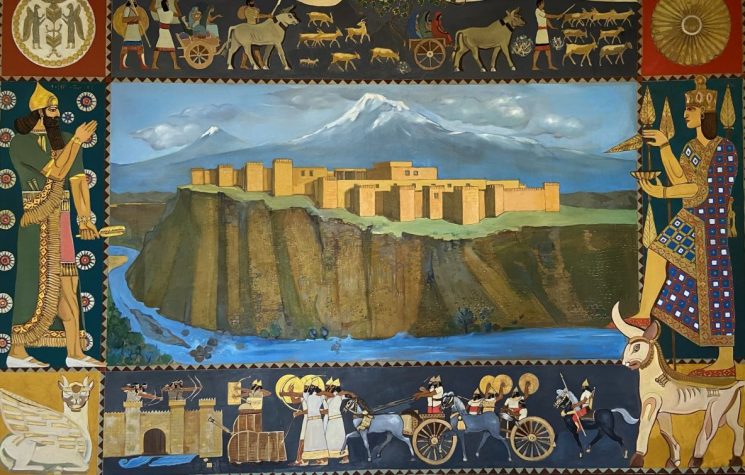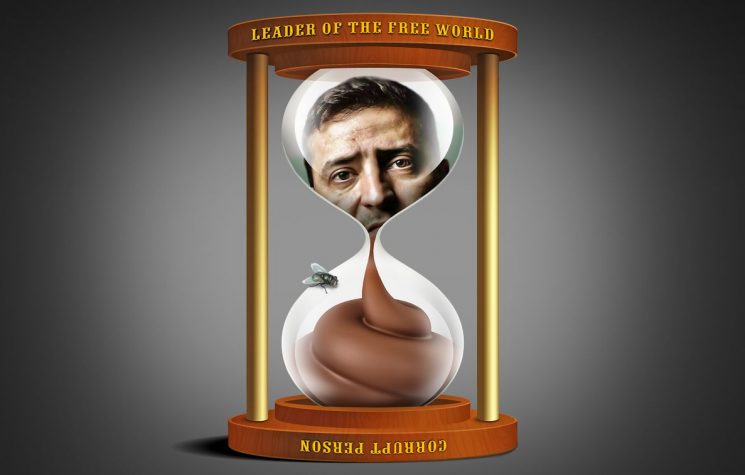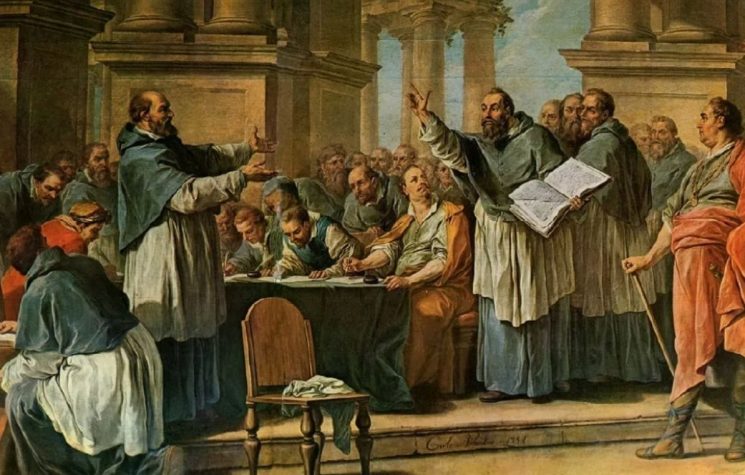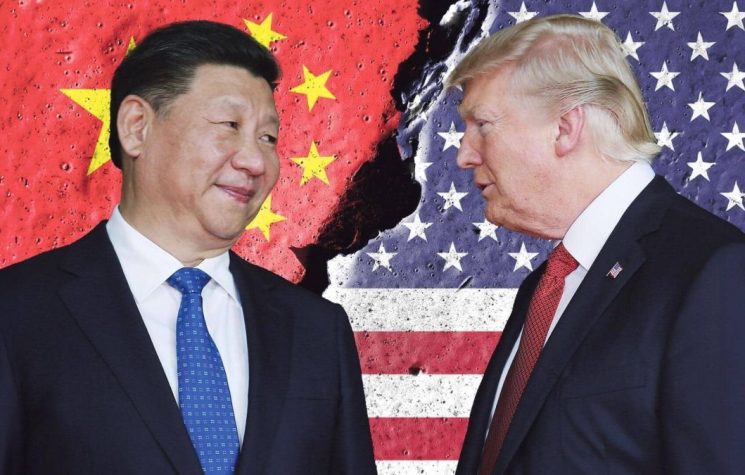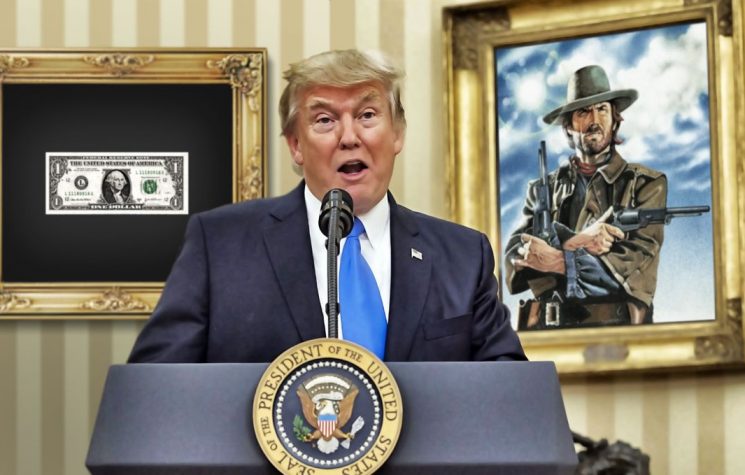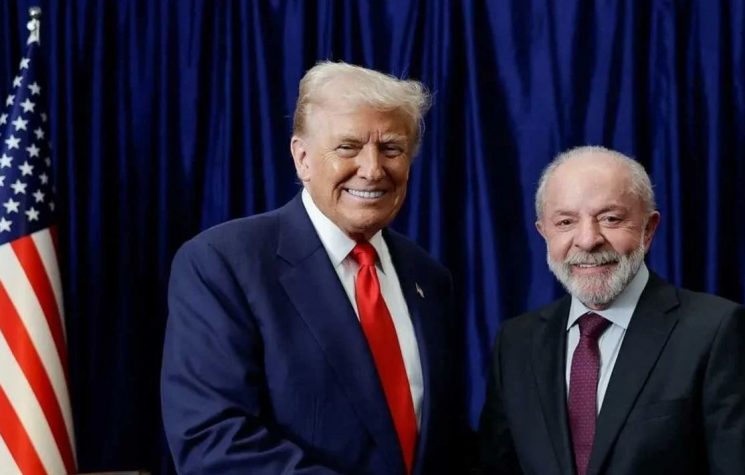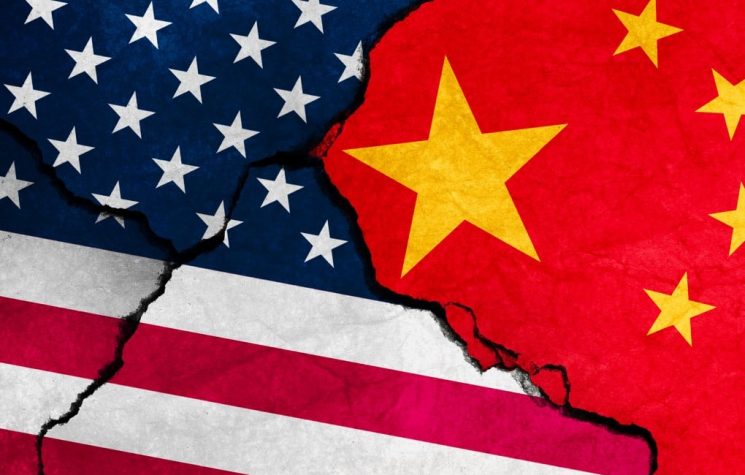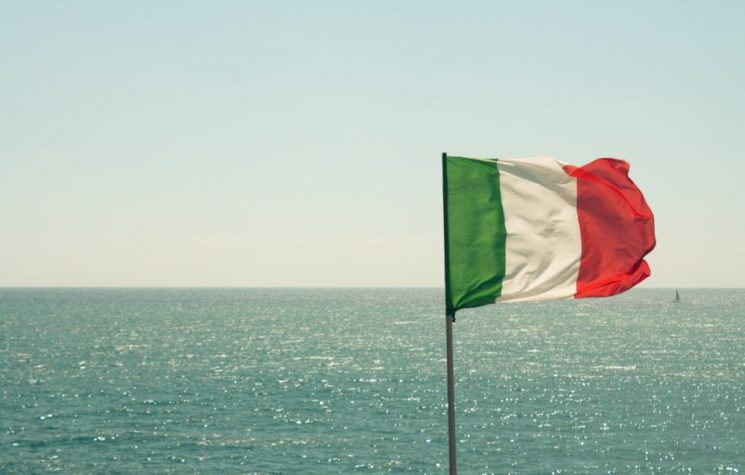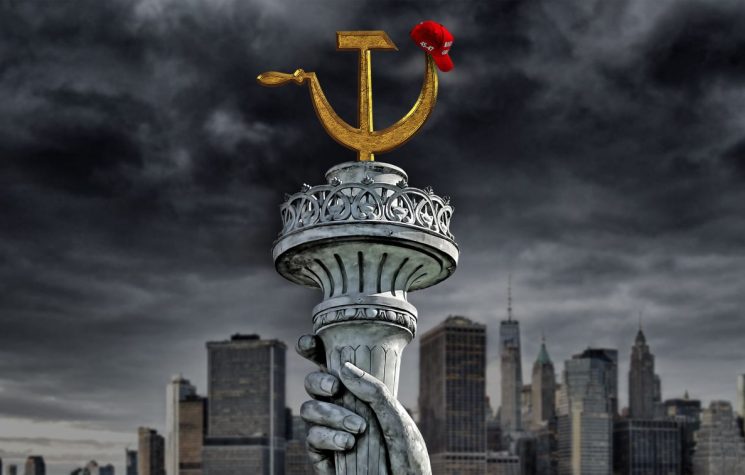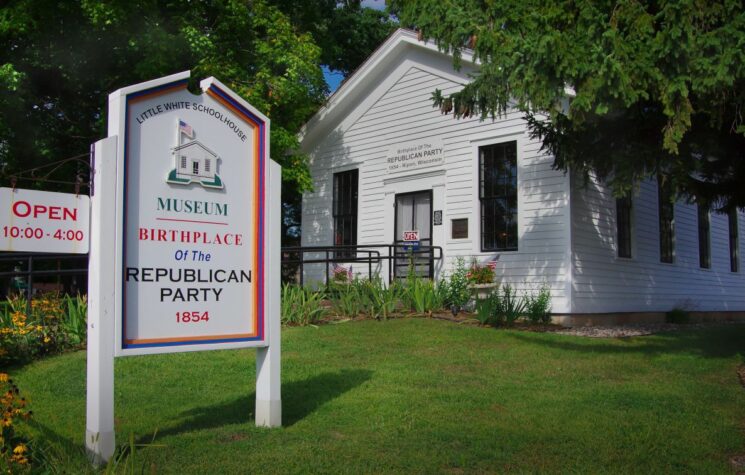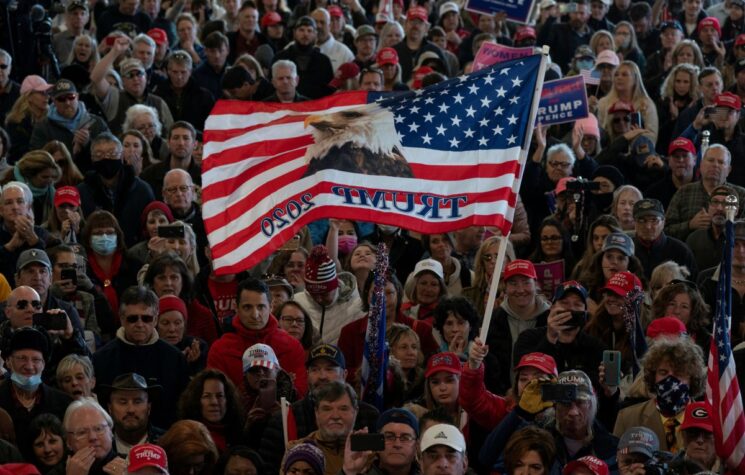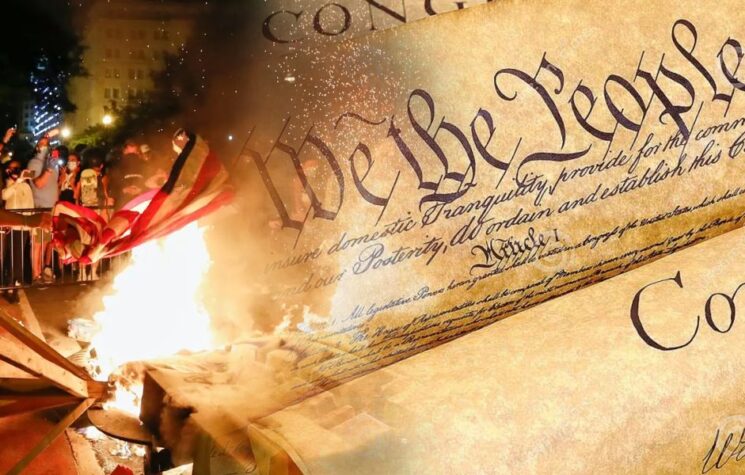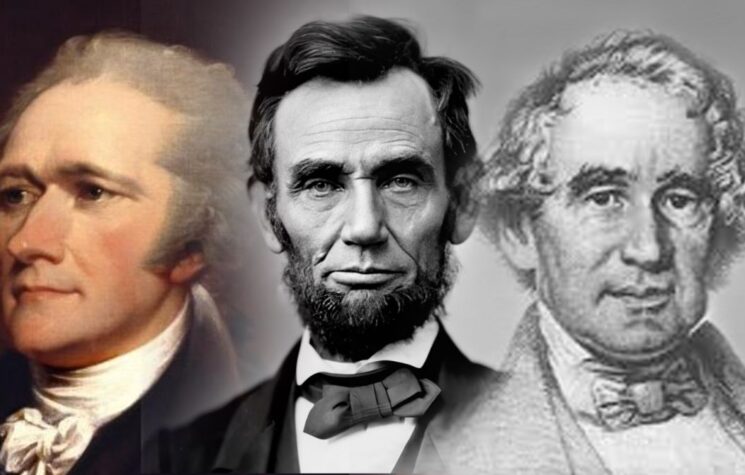In the post WWII years two cultural revolutions swept both Asian and western civilisations appearing on the surface to have distinct characteristics, yet each resulting in profound moral cultural decay.
In America and Europe, the rise of modernism in painting, music, philosophy and architecture were imposed upon academia and the arts which modern research has revealed to have been the work of the CIA and the Congress for Cultural Freedom. This paradigm shift in the arts was funded by western intelligence agencies who justified their artistic patronage with the logic that “if the new communist blocs were to be governed by iconoclasm and realism in the arts which put the state above all ideas of personal freedom, then the “democratic aesthetics” must take the polar opposite stance and promote only the unbounded freedom of individual expression devoid of any connection to the whole of society”. One consequence of this shift was that the Ancient Greco-Roman aesthetics that defined America’s architecture, painting, and general moral sensibilities was brutally amputated [1].
While the backdrop to this reform took the shape of McCarthyism in America, in China a parallel cultural reform occurred in 1949. This cultural movement saw the total rejection of Confucianism as a “relic of past elitism and corruption” which had no place in the Maoist vision for a newly reconstructed China.
In recent years, powerful patriotic forces in both nations have realized that if either culture will find its moral compass and navigate successfully through the 21st century and beyond, it is of vital importance that the best of both ancient traditions be revived while the disorienting effects on the minds and morals caused by the post-WWII amputation of those traditions be reversed.
The Architectural Renaissance Movements of China and the USA
Earlier this year, American President Donald Trump joined China’s President Xi Jinping in earning the ire of post-modernist intellectuals by introducing legislation to ban modernism from all new federal buildings and introduce the classical styles upon which the nation was founded.
In an executive order entitled “Making Federal Buildings Beautiful Again” Trump introduced draft legislation in February 2020 to ensure that “new federal building designs should inspire the public for their aesthetics and make Americans feel proud of our public buildings. Classical and traditional architectural styles have proven their ability to inspire such respect for our system of government.” The draft legislation proposes that all federal buildings should follow “classical architectural style of Greek and Roman” designs which “shall be preferred to the default [modernist] style”.
The legislation was the fruit of intensive organising by an artistic lobby group entitled the National Civil Art Society which was founded in 2002 and is dedicated to reversing the slide into arbitrariness and ugliness which became prevalent in the post WWII years and especially during the Cold War when modernism became the new standard of building design.
The National Civil Art Society’s manifesto reads as follows:
“Modernism has various strands, but most of them are united in rejecting traditional standards of beauty and harmony, and have little place for inherited knowledge. For much of the 20th Century, and indeed continuing today, Modernism replaced the poetry of design with the spirit of mechanization–as embodied in the steel-and-glass box and Brutalist concrete. As the seminal Modernist architect Le Corbusier said, “A house is a machine for living.” We disagree.
In recent years, Modernism has jumped from one fad to another—from blobitechture to Deconstructivism to parametricism to parasitic architecture, and so on. Our most important buildings are often bizarre, hideous, and disorienting structures that have nothing do with their location or surroundings, and which show little respect for the public.
The National Civic Art Society endeavors to help architecture return to its pre-Modernist roots, particularly the forms, principles, and standards of the unparalleled classical tradition, and the humanistic architectural idioms (such as regional styles) and vernaculars that are derived from it.”
By introducing this executive order, President Trump has been labelled a “fascist”, “authoritarian”, “Nazi” and “white supremacist”. Opponents of the classical revival all adhere to the belief that an absolute wall dividing the realms of morality from the arts is unassailable. If this belief is taken for truth, then artistic freedom is certainly being destroyed by this legislation. However, if this absolute wall does not in fact exist, then the banning of ugliness from design is itself an incredibly important pre-condition for actual freedom (more to be said on that below).
Ironically, a loud critic of Trump’s reform wrote a column in Forbes magazine stating that the government buildings are more honest because they are ugly since the nature of government is ugly and in good Pygmalion fashion, should remain that way forever. The author showcases their cynical view stating “most GSA buildings have, in their form, been openly testament to an increasingly secretive, self contained and all-seeing state apparatus. They should not represent anything else but the brutality of government institutions that are no longer simply concerned with collecting taxes, but also the details of our personal lives, by force.”
Following China’s Example
Earlier in 2014, China’s President Xi Jinping first announced that the government would no longer permit the construction of modern art that disobeyed China’s classical styles. At an October 2014 literary symposium in Beijing, Xi gave a lecture where he said that there would soon be “no more weird buildings” (referring to the spread of modernist designs over the past two decades). The president went on to say that “morally inspiring art” should become the new standard and that “fine art works should be like sunshine from the blue sky and the breeze in spring that will inspire minds, warm hearts, cultivate tastes and clean up undesirable work styles.”
By February 2016, China’s state council passed a central government directive to allow for the construction of buildings that were “suitable, economic, green and pleasing to the eye” while banning buildings that were “oversized, xenocentric and weird” which reflect a “lack of cultural confidence and some city officials’ distorted attitudes about political achievements.”
These reforms in Chinese architecture have been driven by a deeper cultural fight to re-establish Confucianism as the moral foundation for China’s civilisation. This new Confucian movement to reverse Mao’s banning of Confucius began in earnest with the 1978 Opening up of China but has taken on new life with Xi’s 2013 presidency. Built in 2013, the Confucius Academy– a 75 acre complex in Confucius’ hometown in Southwest China began providing free lectures, exhibitions, and training for bureaucrats and citizens.
The Academy’s party secretary Xu Qi stated “since China’s reform and opening up 30 years ago our economy and society have developed very far, but spiritually and morally, over the years, due to various reasons there are still problems. If Chinese people want to stand up in the world in addition to being developed economically and technologically, we also need to develop spiritually and morally. We need to become truly civilised.”
The unifying principle of Confucius and Socrates
Nearly contemporaries, both Confucius (551-479 BCE) and Socrates (470-399 BCE) arose at moments in history where their respective nations’ were suffering corruption, decay and disunity. Both China and Ancient Athens alike were suffering under the rise of sophists and had fallen into decadence and war. Both men created schools of thought that sought the remedy for society’s ills in the search for natural law- harmonizing the internal creative reason of mankind with the discoverable laws of creation.
The powerful philosophical traditions arising from both schools united aesthetic development of the arts with science ennobling the soul in such a way that our desires and duties would increasingly come into unity during the course of life. This process was in turn reflected in the political improvement of society
and underlies such paradoxical statements as found in the preamble of the US Constitution “In order to form a more perfect union” (i.e: How could something be more perfect if perfect is a fixed state?)
Any government which was fit to survive, had to abandon the “law of the jungle” system of “might makes right” in order to obey the higher law of “right makes might” as Socrates’ exemplified in his Gorgias dialogue and chose to adhere to a standard of natural law. This was a standard which Confucius called “Tianxia” or “the Mandate of Heaven” and which President Sun Yat-sen elaborated on profoundly in his famous book “The Three Principles of the People” in 1924.
Neither great philosopher saw the success of their grand goals during their lives, but both created powerful schools with disciples like Plato (428-348 BCE) and Mencius (372-289 BCE) who carried forth and advanced their mentors’ concepts.
Even though each culture suffered ebbs of decline and war, the subtle yet powerful currents of each movement persevered giving birth to the greatest periods of renaissance that humanity had ever seen. Whether we are looking at the Confucian renaissance of the Song Dynasty (960–1279 CE), or the Platonic revival under the 15th century European Golden Age, the effect was the same: population growth (in both quantity and quality), reforms that extended classical education to all classes, public works to improve the lives of the people and unifying trends in science and the arts which saw an explosion of new discoveries in medicine, astronomy, mathematics, physics, painting, music, engineering and architecture.
The trend towards population growth can be interpreted as proof that we are just a cancer or that creative discovery allows humanity to overcome the “limits to growth” which nature imposes on the ecosystem – image from the Schiller Institute.

The idea that the King’s authority stemmed not from his blood or might, but from his moral duty to serve the people and act as the instrument of God’s loving will paralleled the eastern concept of Confucius’ Mandate of Heaven and shaped the identities of such great western Platonic leaders as Charlemagne, King Henry VII and France’s great King Louis XI who outlined this view in his famous 1483 message to his son (The Rosebush of War ).
What is often underappreciated is that this renaissance movement was driven by an architectural project which some have called “The Apollo Project of the 15th Century” begun by Dante Alighieri in 1296 to create the Santa Maria del Fiore Cathedral in Florence. This project took over 140 years to build and miraculously continued steadily throughout the 14th century Dark Age which saw 1/3 of Europe’s population wiped out by plague and war. It was finally completed in 1469 when a golden sphere co-designed by Leonardo Da Vinci was installed atop Filippo Brunelleschi’s dome (which still holds the record today as the world’s largest masonry dome). Both Dante, Brunelleschi and Da Vinci were all leading Platonists of their age, and the moralizing effect this project had on Italy as a whole was electric as it renewed the faith in mankind’s creative reason as a species made in the image of God… an idea which had nearly died during the long period of the dark ages.
President Donald Trump was the first American president that this author is aware of, to celebrate Brunelleschi’s Dome in January 2020 when he stated:
“Centuries ago, at the time of the Renaissance, skilled craftsmen and laborers looked upwards and built the structures that still touch the human heart. To this day some of the greatest structures in the world have been built hundreds of years ago. In Italy the citizens once started construction on what would be a 140-year project, the Duomo of Florence, incredible place. While the technology did not yet exist to complete their design, city fathers forged ahead anyway, certain that they would figure it out someday. These citizens of Florence did not except limits to their high aspirations, and so the great dome was finally built….”
What is most notable is that he delivered this praise of the Dome in opposition to the cynical Malthusian argument that humanity could only overpopulate like a cancer at the expense of Mother Gaia (a doctrine promoted heavily by Prince Charles, Greta Thunberg and Jane Goodall- all of whom presented their cynical man=virus thesis at the same Davos event).
Faced with the looming threat of a new dark age sparked by a new viral pandemic, financial collapse and general nuclear war, the fight across the USA and China to revive renaissance heritage traditions is needed more than ever. The renewed appreciation for the inter-connectedness of art, science, morality and political freedom across the east and west is a breath of fresh air which one may only hope is a pre-cursor to a new renaissance encapsulating for the first time in history, the best of every culture across the earth.



















